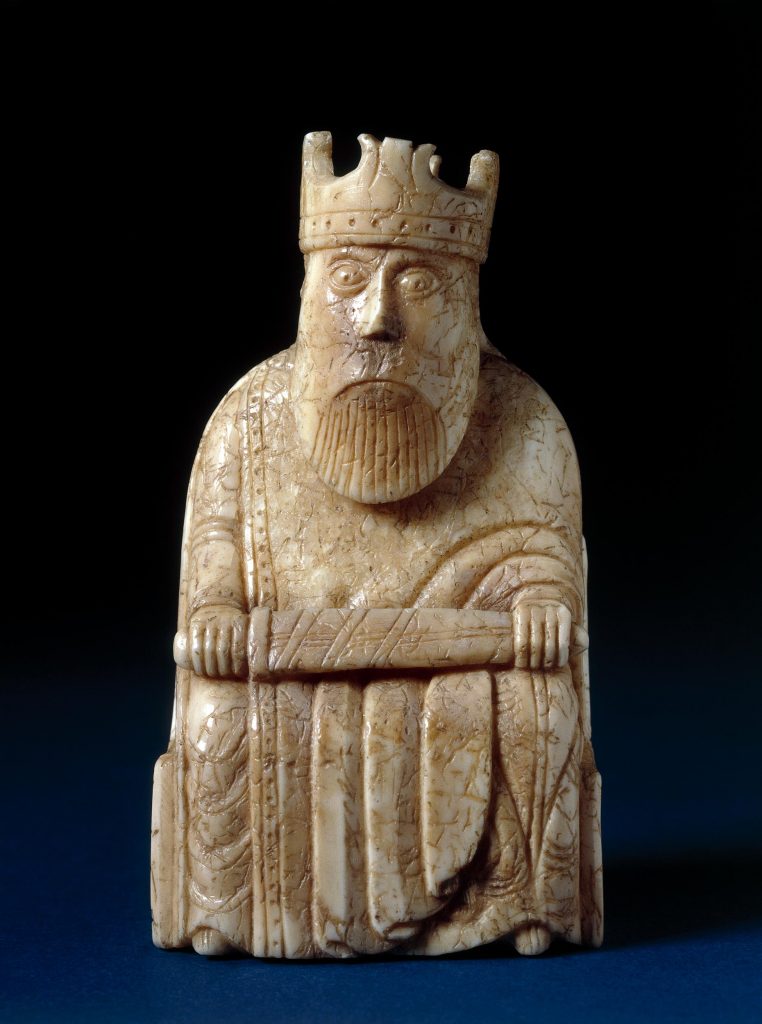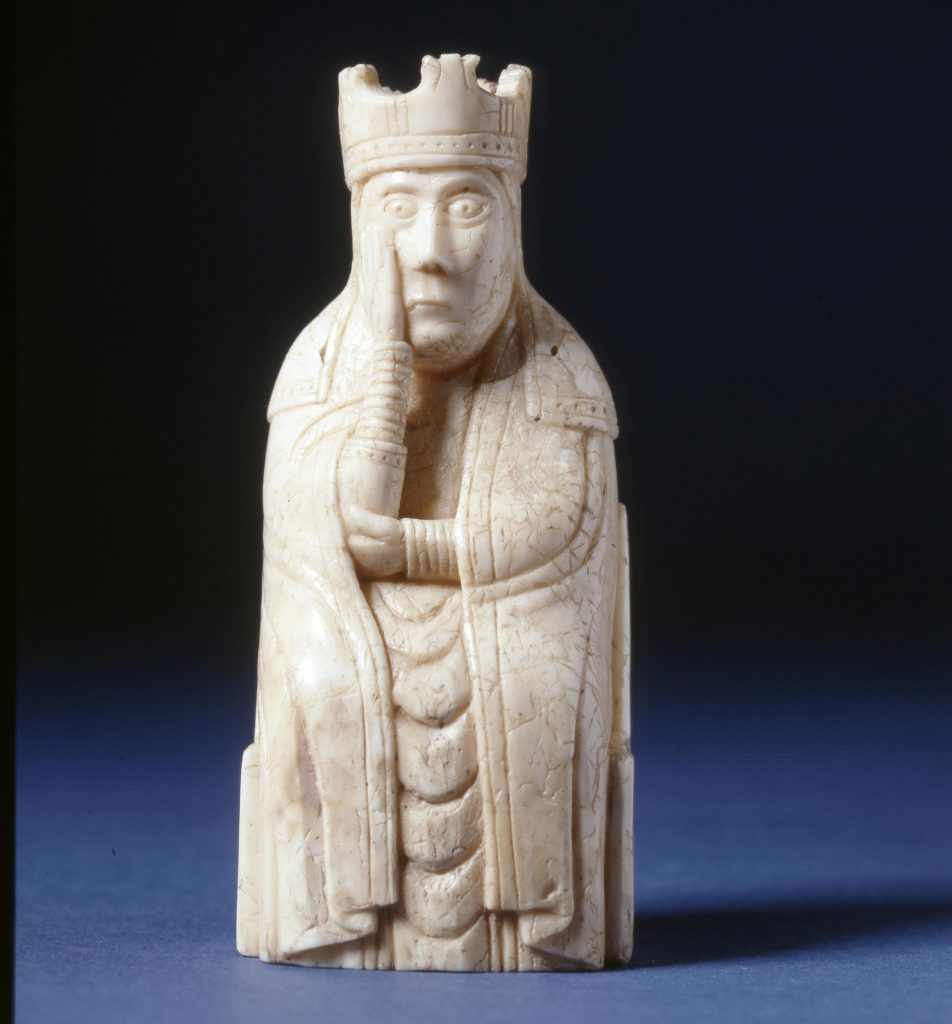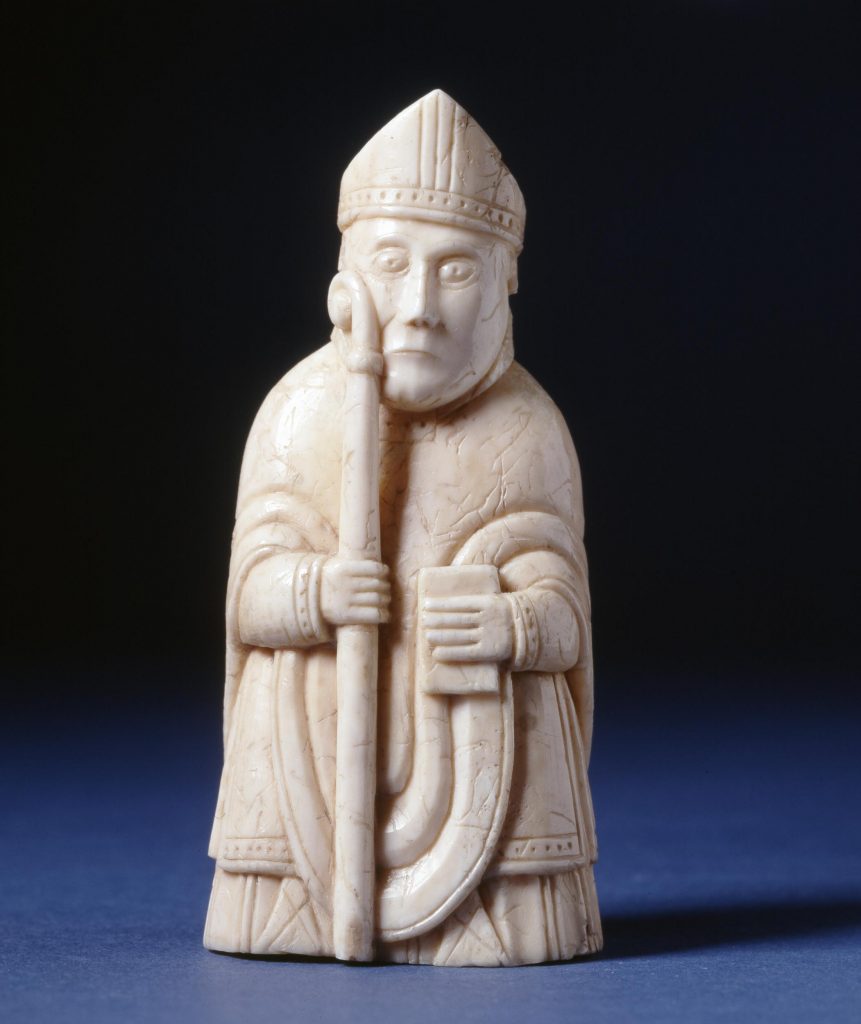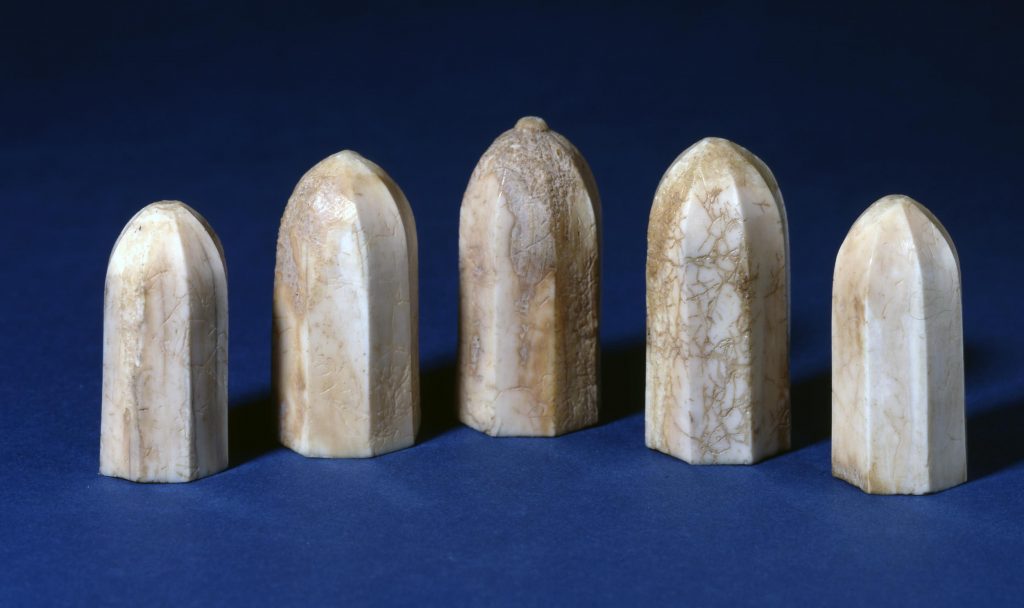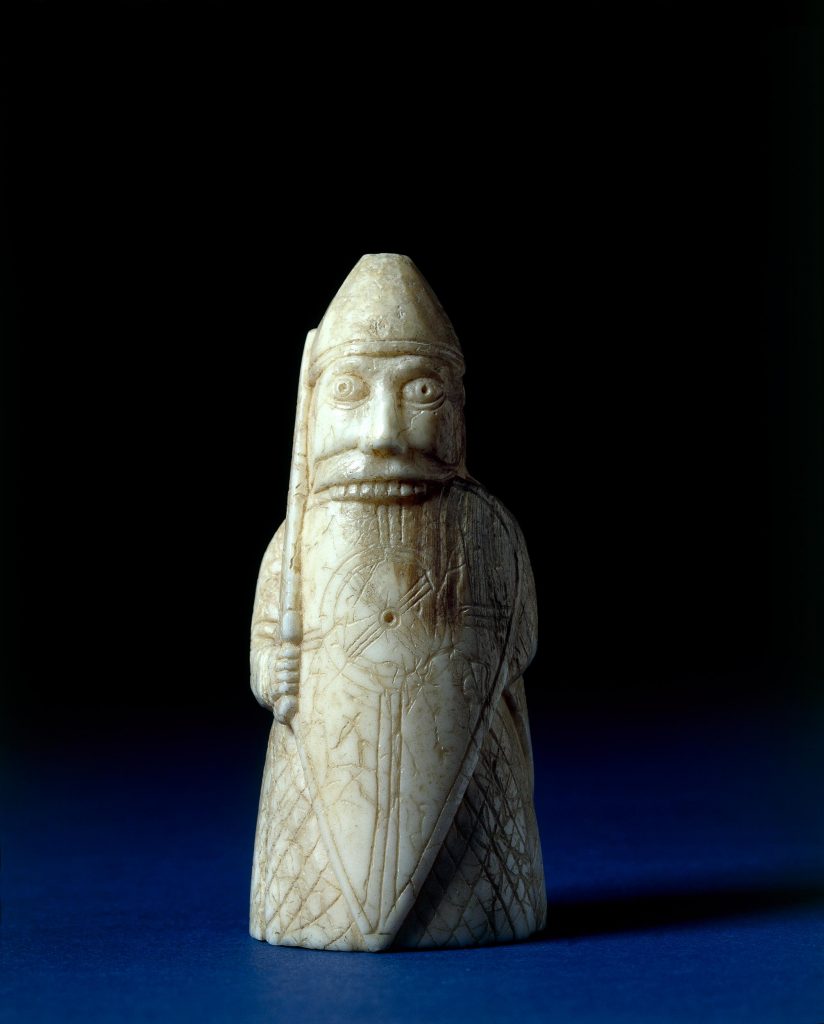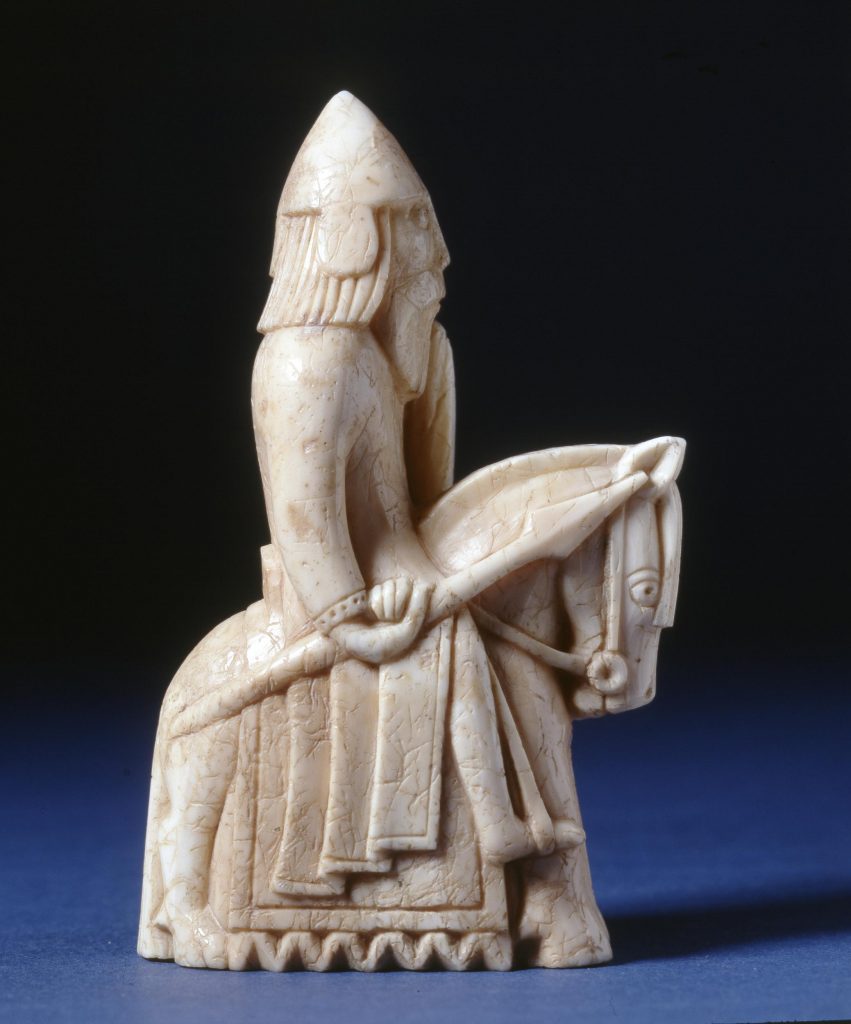Lewis Chessmen
The Lewis Chessmen were found in 1831 on Uig Bay, Ardroil.
The 78 pieces were found in a stone cist in the shifting dunes of Uig Bay, Ardroil, by Malcolm “Sprot” Macleod of the village of Pennydonald. They have been described as ‘the outstanding ancient chessmen of the world.’ They form that largest and finest group of early European chess pieces to have survived.
Ninety-three objects are known today in museum collections; seventy-eight chess pieces, forteen gaming pieces and one belt buckle. The chess pieces appear to make up the remains of at least four original sets.
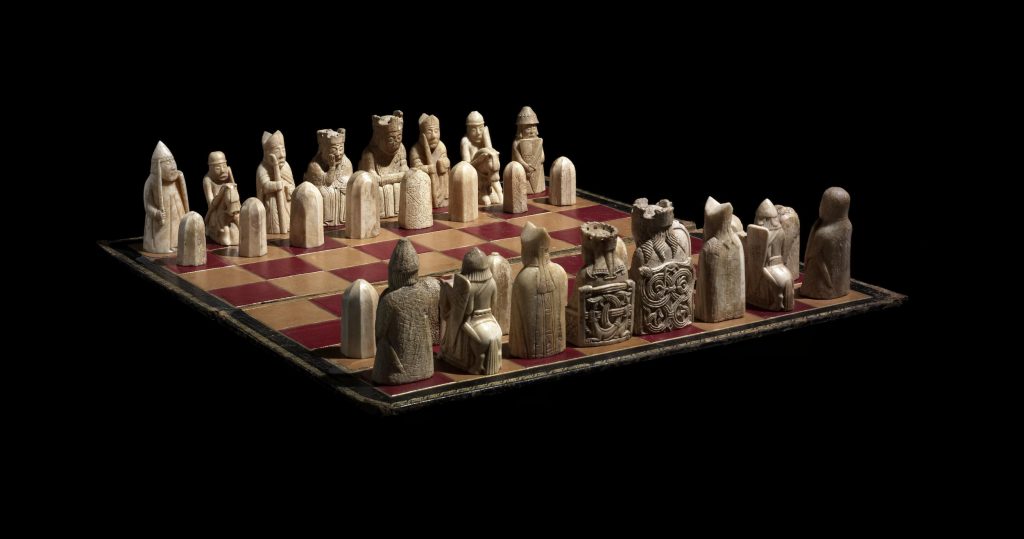
What are they made from?
All the pieces found in Uig Bay had been carved from walrus tusk. Norse sagas and poems tell of expeditions to the northern seas beyond the arctic circle, to capture the animals. Walrus ivory was much used by Scandinavian and other European sculptures for prestigious objets, which were extensively traded.
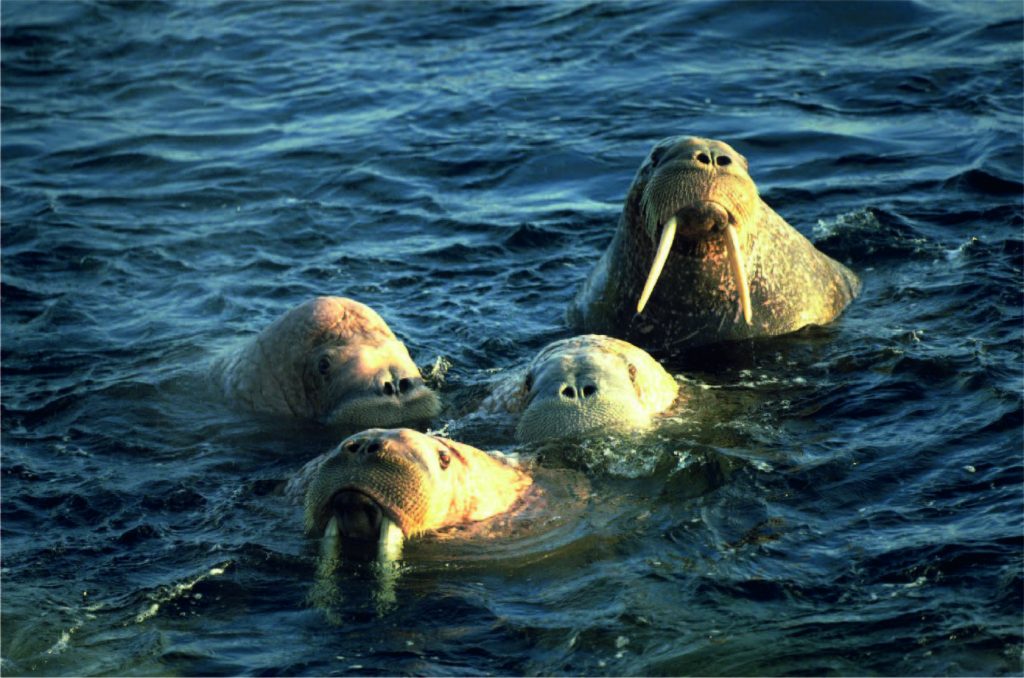
The Lewis Chessmen set
You can see the full chess collection via The British Museum website where they are currently being exhibited. Along with the National Museum of Scotland who hold several pieces too.
Series: The Lewis Chessmen © The Trustees of the British Museum
See more of the collection over at the other museums
From the style of carving and dress, the pieces have been dated to the mid to late twelfth century and are certainly Norse in origin.
They may have been produced by one or several workshops in Trondheim, Norway, where a similar piece was unearthed. Norse occupation of the Western Isles lasted for nearly five centuries and the chessmen may have been hidden towards the end of our Viking period.
Lewis was part of the Norse Kingdom at the time that the pieces were made and would have had an important place in politics of the western seaboard.
Nothing about the circumstances of their discovery can help us to date them. Very few of the similar chess pieces in collections in London, Norway and Ireland have been found in dated context.
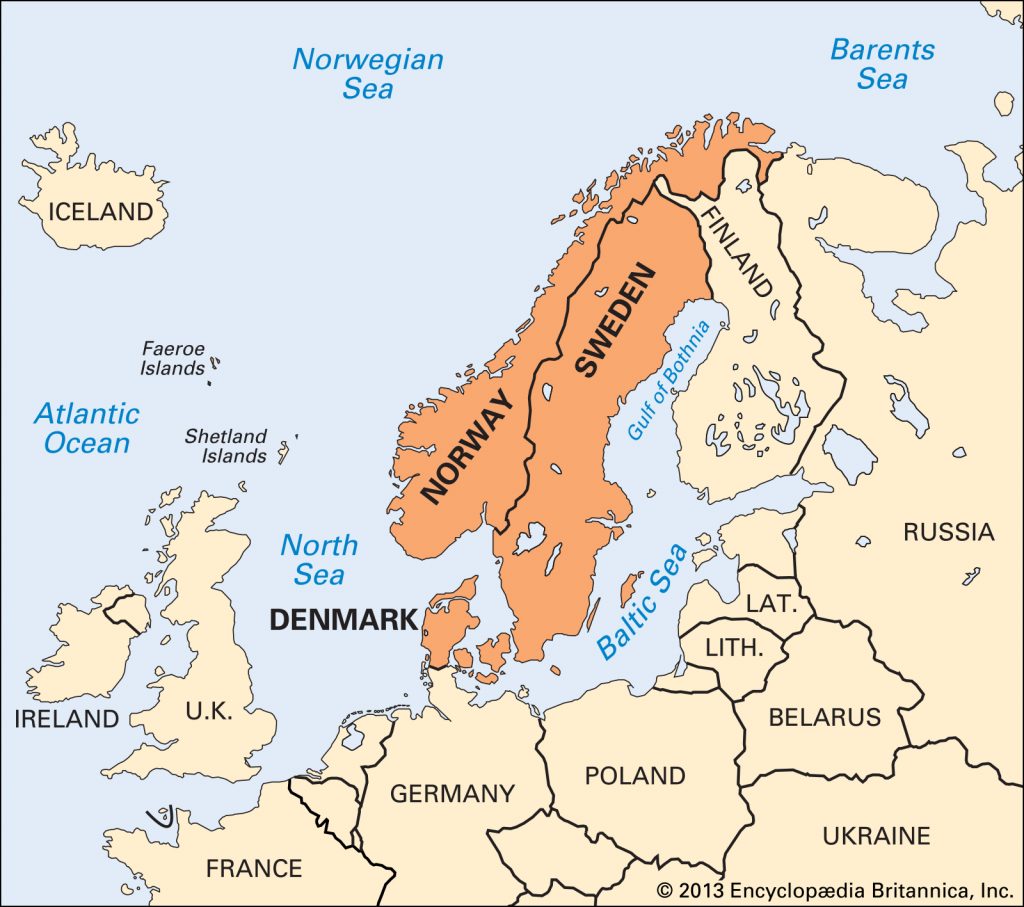
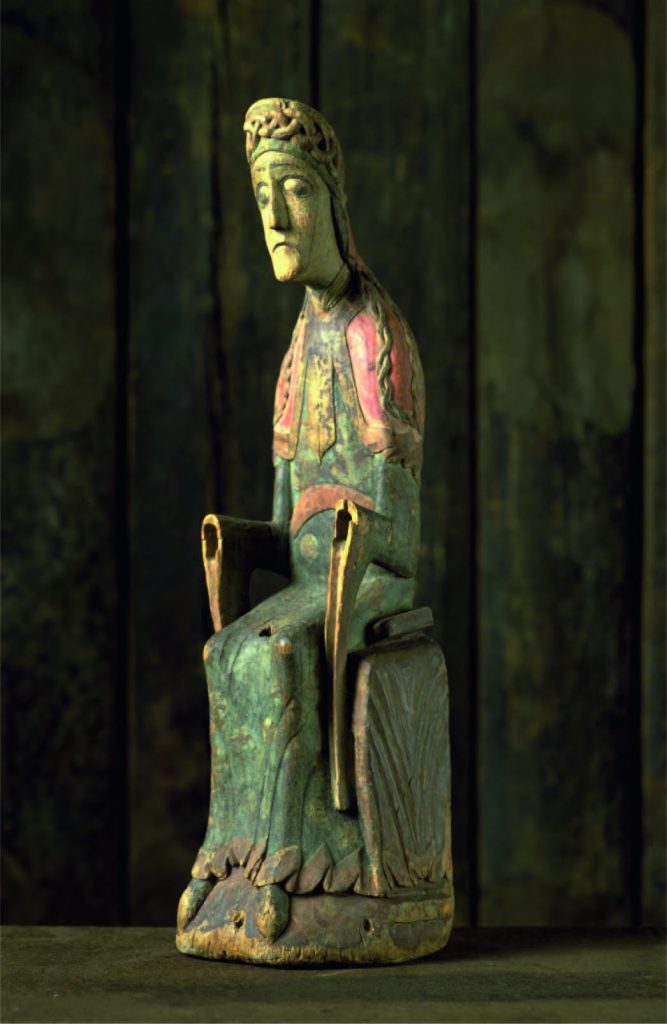
However, the carved details on the thrones, the clothing, hairstyles, arms and armour all have parallels in 12th century art, architecture and archaeological objects.
The Image of the queen id typically 12th century Scandinavian Art. An almost exactly similar piece was found at Trondheim, Norway and this mid 12th century Madonna from Mosjo, Sweden is comparable in style to the Lewis Queen.
How the hoard came to be in the sandbank is, of course, unknown.
We can only guess why the chess pieces were found buried in the sand dunes above Uig Bay. The seaways of Western Scotland must have been busy with merchant ships plying their way between and beyond France, Spain, Ireland, Scotland, Iceland and the scandinavian countries.

A local story maintains however that they were brought ashore much later by a young shipwrecked sailor, who made the mistake of telling a gillie he met in the hills what he was carrying. The unscrupulous gillie murdered the boy for the pieces, which he naturally hid, but he was himself hanged in Stornoway for other crimes and allegedly confessed to the murder on the gallows.
Years later, Malcolm Macleod came upon the hoard of chessmen by chance. Rev Col AJ Mackenzie and a friend came across the bones of a boy in a cave in the hills and supposed they must have belonged to the young sailor. It seems the pieces were initially displayed by Malcolm in his byre and people came from around the district to view them. He sold them, apparently for £30, to a Roderick Pirie of Stornoway. (Malcolm and his family and neighbours were evicted from Pennydonald a few years later when the farm at Ardroil was created.)
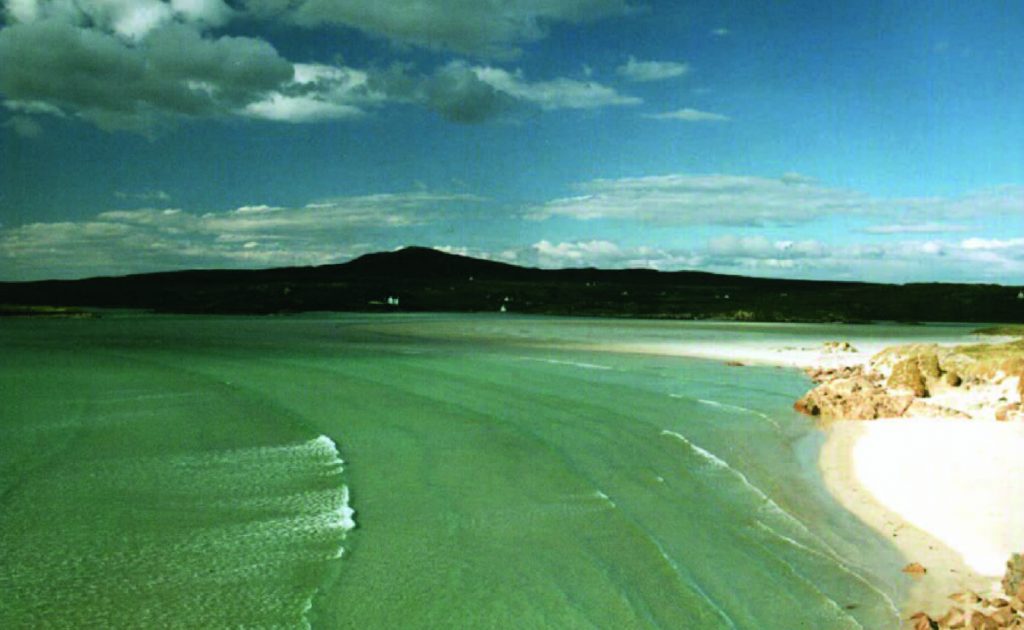
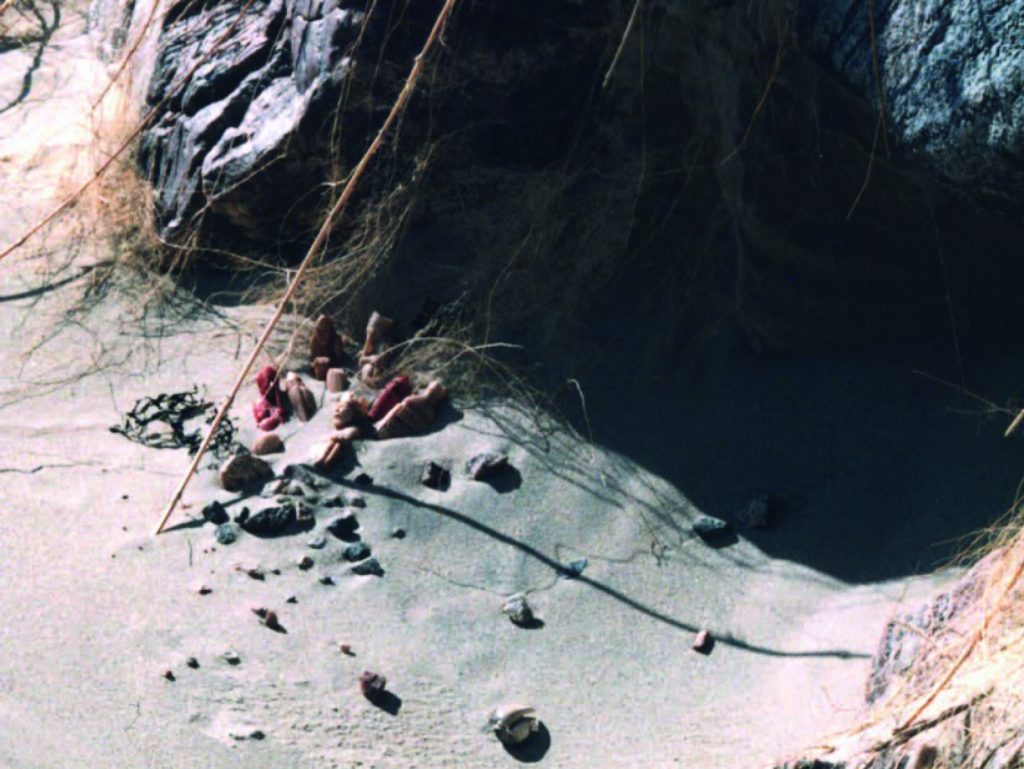
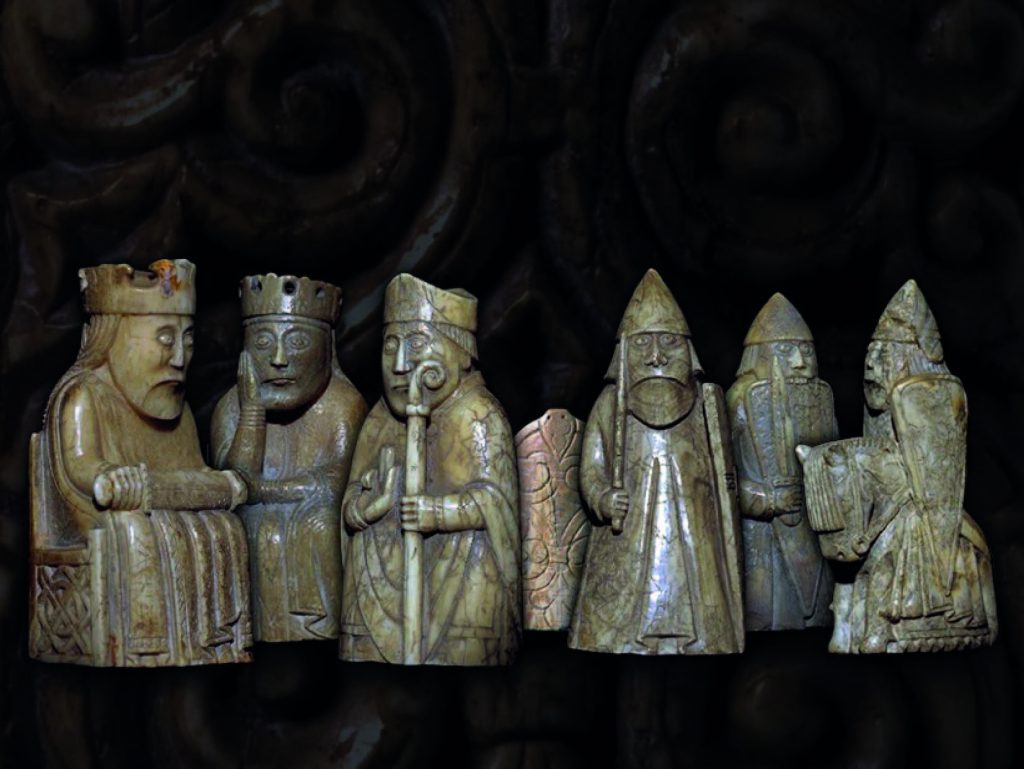
Leaving the Island
The pieces seem to have remained for a while in Malcolms home in Peny Donald. Local people visited curious to see them. Somehow the pieces ended up came into the hands of a stornoway merchant, Captain Roderick Ryrie, and it was he that took them to Edinburgh for sale. A “Dealer in Curiosities” there, Mr. Forrest, bought them. He the sold some to a fellow of the Society of Antiquaries of Scotland and the remainder to the British Museum.
The British Museum believed this collection to be the whole set, but ten were sold privately to a member of the Society who also bought a stray bishop directly from Lewis. These eleven were acquired for the National Museum of Scotland in 1888. Six of the chessmen were last in Uig in 2000, for a single day.
They spent the summer of 2010 in Edinburgh and have traveled subsequently to Aberdeen, Shetland and Stornoway, opening there in April 2011. We expect some will pay a brief visit to Uig.
Two wooden Chessmen
Two large wooden chessmen were commissioned from Stephen Hayward, Tain, by Uig Community Council, and now stand outside the museum and near the findspot on the machair at Ardroil.
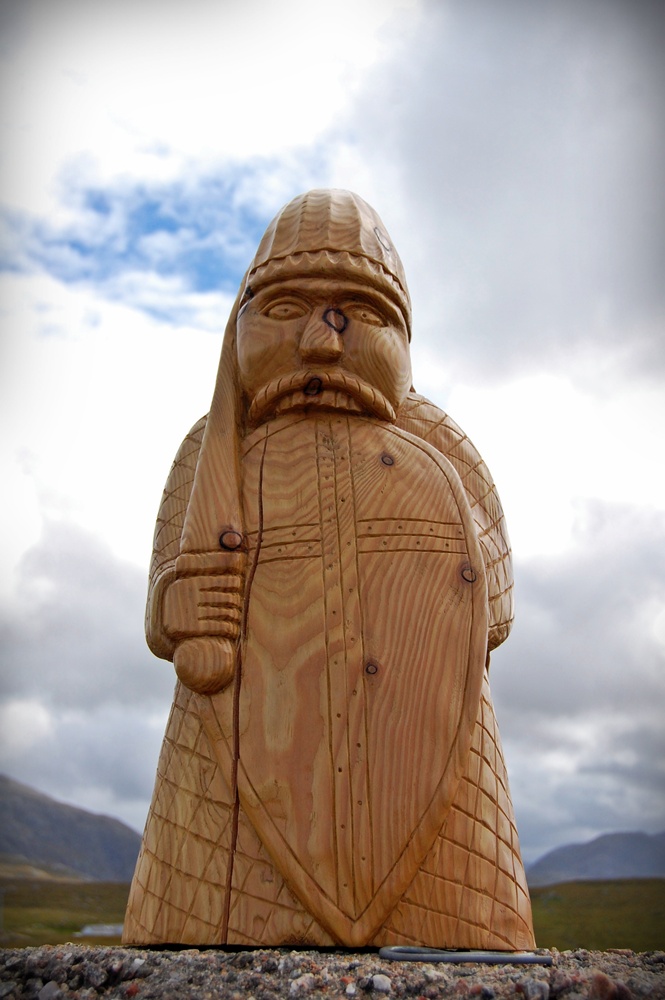

A video was made by Keith Stringer and shows the installation of the King (recently named Jorund at the 2008 Gala Day) at Ardroil.
Update: a scholarly article published in Mediaeval Archaeology in November 2009 (see press reports) suggests that the findspot may have been Mealista, rather than Ardroil. Uig disagrees. The article does provide valuable background information, however.


